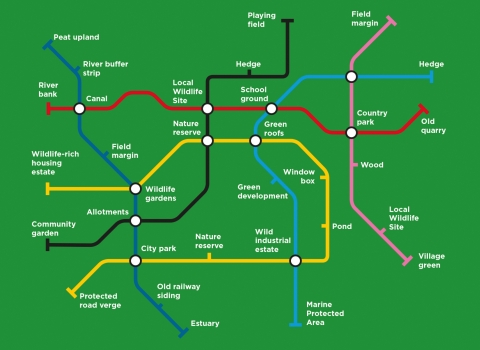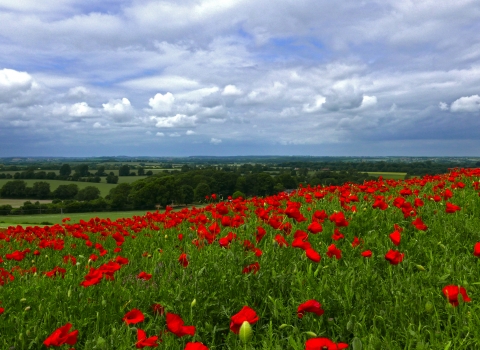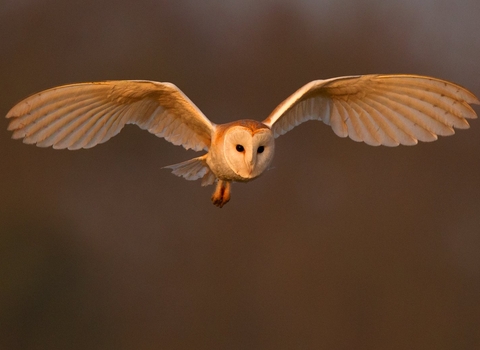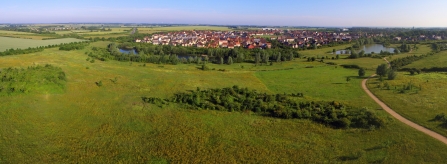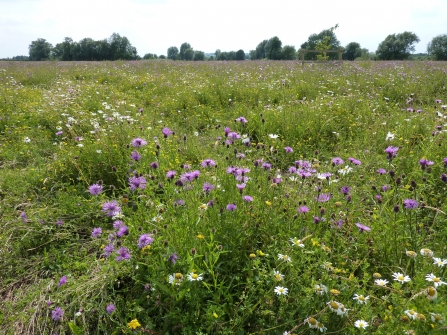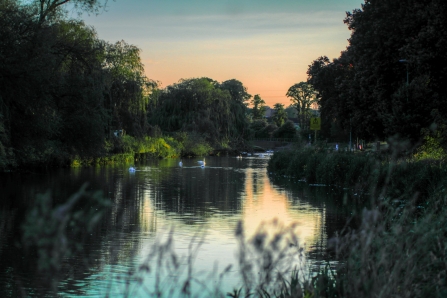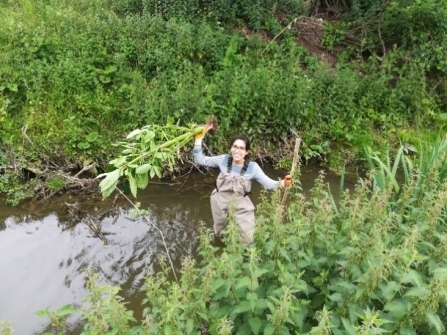The State of Nature report has been produced every three years since 2013, and brings together data and expertise on how wildlife is faring across the whole of the UK, and its seas, Crown Dependencies and Overseas Territories.
Comparing data about thousands of species gathered over many years, its job is to give us as clear a picture as possible about the abundance and distribution of the wildlife we share our land and sea with - and to find out where we stand in the global picture of biodiversity loss.
Working together to gather evidence
Following the State of Nature reports in 2013 and 2016, in 2019 leading professionals from more than 70 wildlife organisations have joined with government agencies for the first time, to present the clearest picture to date of the status of our species across land and sea. The 2019 report provides a collective government and NGO statement on our biodiversity.
The upshot is: Nature is in trouble and still declining
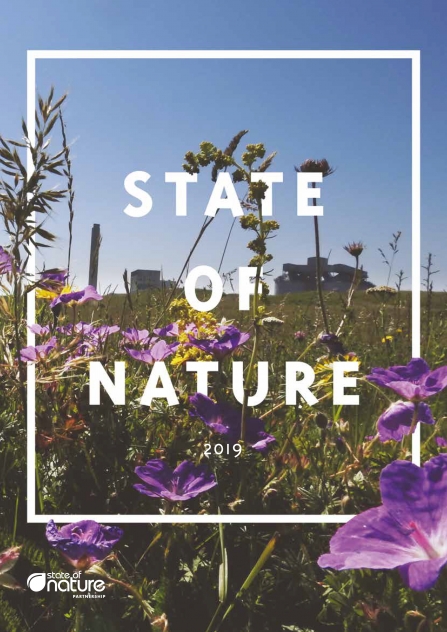
Much is known about the causes of decline and about some of the ways in which we could reduce impacts and help struggling species. The evidence from the last 50 years shows that significant and ongoing changes in the way we manage our land for agriculture, and the ongoing effects of climate change are having the biggest impacts on nature.
Pollution is also a major issue. Whilst emissions of many pollutants have been reduced dramatically in recent decades, pollution continues to have a severe impact on the UK’s sensitive habitats and freshwaters, and new pollutant threats are continuing to emerge.
The greatest drivers of change
We have the solutions
What you can do
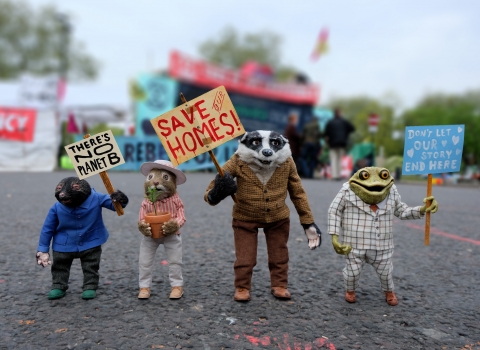
Join our Campaign for a Wilder Future
We're calling for a strong Environment Act with a Nature Recovery Network established in law.
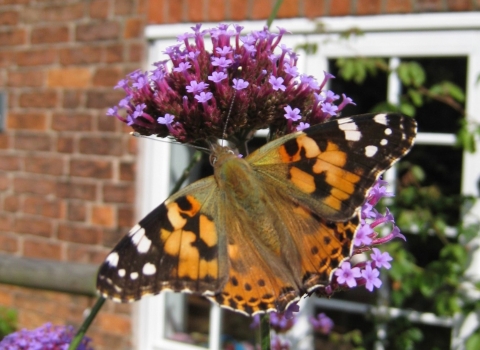
WildNet - Adam Cormack
Individual actions add up to make a big difference for wildlife
Whether it's gardening for wildlife, reducing your carbon footprint by taking fewer flights, avoiding single-use plastics or taking measures to conserve water in the home - any action you take for our environment means helping your local wildlife.
What we're doing
As well as campaigning for a Nature Recovery Network to be established in law, the Wildlife Trusts are working across the whole country to protect and restore nature on land and sea, building a Nature Recovery Network where wildlife and people can thrive. Here are some local examples of how our work fits into this national picture.
Tackling urbanisation: Nature-rich development
Cambourne
Cambourne regularly features in national planning guidance as an example of good planning designed around a natural environment. The village itself, comprising nearly 5,000 houses, a business park and five schools, is built upon old arable farmland. We were involved early on with this new development by MCA Developments, helping to develop a 'green infrastructure' which identified and retained natural features such as woodlands, hedges and ponds as well as places for the creation of new habitats. We continue to manage 90 hectares of woodland, grassland, ponds and orchards in the village. It is now richer in wildlife than the surrounding land and many new species have colonised.
Trumpington Meadows
Trumpington Meadows is a meadow nature reserve that is part of a large housing development on the southern fringe of Cambridge. When the land was allocated for development, the local council required the provision of large green corridors to connect the centre of Cambridge through the new development to the countryside beyond.
Trumpington Meadows Land Company wanted to create a high-quality development and viewed a new country park as integral to this. The Wildlife Trust for Bedfordshire, Cambridgeshire & Northamptonshire helped to design and create the development’s green spaces and now manage the country park.
Local play areas, swales and tree avenues are included throughout the development. The 58-hectare country park is designed to be both a space for people and a ‘nature reserve’. The creation of over 40 hectares of new species-rich meadows, hedgerows, woodlands and restored floodplain meadows began before the first houses were built to allow the landscaping and habitats time to mature.
The country park sits beside the River Cam. The river habitat has been restored and the river re-connected with its floodplain meadows, reducing flood-risk downstream. A new pond with overflow area and open ditch features, slows rainwater runoff to the River Cam whilst providing additional habitat for wildlife.
Tackling freshwater management: Nene Valley NIA
Improving habitats in the Nene Valley
Working with partners in the Nene Valley Nature Improvement Area, we are re-creating and re-connecting nature areas along the Nene and its tributaries from Daventry to Peterborough. 75 miles of the river was walked between 2012 and 2015, from which 350 projects were identified that will help to improve water quality and river habitats. 4km of river has already been enhanced, and the Farming for the Future project has recently created 7km of shallow ditch habitat for breeding waders and a wide array of flora and fauna.
Tackling invasive non-native species: Water for Wildlife
Himalayan Balsam
Through our Water for Wildlife project and with the help of volunteers, we map and pull Himalayan Balsam to reduce its dominance on a river. These projects aim to work from the source of the Himalayan Balsam downstream in order to try to eradicate it completely, and have been showing some success.
We also support the Environment Agency’s floating pennywort project on the Great Ouse through our River Wardens scheme. Our volunteers spot any plants that require removal and report them, in order to prevent this invasive species from making its way up to the Ouse Washes.
Tackling woodland management: Dormouse monitoring

Baby dormouse by Gwen Hitchcock
Dormice
Hazel dormice are undeniably one of the cutest animals we have in this country, but they can also help us with our conservation work. These cuddly looking creatures are a really good indicator of how well our woodlands and Living Landscapes are doing. By monitoring our dormouse populations, we can keep an eye on how well our woodland management is going, and make recommendations of best practice for others to follow.
Tackling agricultural management: Wet farming research
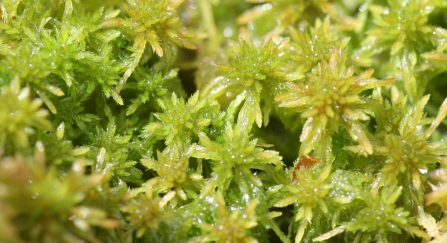
WildNet - Vicky Nall
Water Works
Working in partnership with Cambridgeshire ACRE, Centre for Hydrology and Ecology and the University of East London, our Water Works project has recently been awarded funding from the People's Postcode Lottery Dream Fund. Over the next two years Water Works will create field scale trials of wet farming at the Great Fen to test innovative new crops for food, healthcare and industry, and to lock in carbon. A large part of the project will be working with local farmers, food producers and landowners to create and test this new way of farming and to share lessons learned along the way.

Big Give Christmas Challenge 2025 – A Very Big Thank You!
A very big thank you to those of you who donated to our Ancient Woodland appeal via the Big Give Christmas Challenge 2025.

Changing Wildlife, Changing Climate - new podcast episode with Brian Eversham
Chief Exec Brian Eversham rounds up the work of the Wildlife Trust BCN over the last year and highlights some of our biggest challenges…
Cambs & Peterborough Local Nature Recovery Strategy reflections
Martin Baker is Cambridgeshire Conservation Manager for the Wildlife Trust for Beds, Cambs and Northants

